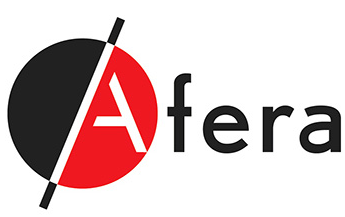
Afera Tape College 2016 Event Editorial by Dr. Michael Gerstenberger

This year, April 18 - 20 the seventh AFERA Tape College assembled close to eighty participants to its well-known place in Brussels. As usual, the following overview may be deemed a selection giving some general overview of the event without reflecting any undue preference.
G.-J. van Ruler of Eastman Chemicals (The Netherlands) presented a broad and a deeply rooted overview of “Chemistry of PSA formulations styrene block copolymers, natural rubber and polyolefins”, thus referring to some still most important classes of backbone (co-) polymers in PSA chemistry. Tackifiers as low molecular species providing adhesion properties to the formulation also were broadly covered, such as petroleum based (hydrocarbon resins) materials, as well as those of natural origin (terpenes, rosins, and derivatives thereof). As the third important group of components word was made of plasticizer oils, paraffinics and aromatics, phthalates, and liquid resins, which allow for softer adhesives with less cohesion. A large part of the presentation was devoted to the “art of formulation”, influence of the respective components on the final adhesive properties, and the analytical measurements employed to unequivocally assess, compare and reproduce the adhesive performance profile. Hence, tack, shear and peel adhesion were explained as well as dynamic mechanical analysis (DMA) and their implications.
“Let there be light: UV curing of acrylic pressure-sensitive adhesives” was the topic of F. Bennet´s (tesa, Germany) lecture about another important class of polymers and the particular opportunities offered by the unsaturated moiety of their molecular structure. The author elaborated in depth about the “magic triangle” of adhesion, cohesion and tack, the chemical reaction of cross-linking through radiation (UV light) induced polymerization, as well as on the pitfalls in case of “overdosing” (result: too much cross-linking, too brittle adhesive layer) or “underdosing” (result: too little cross-linking, loss of cohesion) the radiation. Advantages (solvent free, fast, low temperature) of the process were discussed as well as challenges (need for transparency, no pigmented material). The two types hot-melt adhesive as well as syrup polymerisation and their results were elaborated and alos details of the process set-up. A special part of the presentation was devoted to different types of UV light sources such as traditional mercury lamps and the modern LED´s. Special remarks were dedicated to the use of photo initiators, sensitizers, and how to overcome oxygen inhibition.
What would even the best PSA material be in practice without a well-tailored release agent! J. Pomorin of Evonik Nutrition & Care (Germany) therefore dug deep into “Chemistry of release coatings”. Challenge is to handle sticky products during production, storage, transport and application where release materials are indispensible to ensure proper PSA functionality in such diverse applications like tapes, labelstock, hygiene, building / insulation, and technical coverage. Most well-known groups of release agents include carbamates, waxes, fluoroplastics, and – of course – silicones. Particularly the latter exhibit a very broad versatility due to their unique chemical structure endowing them with extremely low surface tension and a particularly flexible molecular backbone. Silicone polymers might be cured thermally or with the help of UV light; they can be delivered solvent based, solvent free or in aqueous emulsions. Each of the systems has its own intrinsic advantages. UV curing silicones, for instance, may boast with low curing temperature (also sensitive substrate applicability), low UV demand, even suitable for very thin plastic substrates, and low shrinkage of paper support. Newly developed radical curing silicone release agents allow for such ground breaking uses like linerless and clear-on-clear labels.
There are numerous ways how to apply water-based adhesives onto the respective substrate. F. Reinhard of BASF (Germany) gave an overview of the machinery involved: “Coating technology for water based adhesives”. Starting from such basic set-ups like the comma bar, which might prompt adhesives to develop foam and which cannot be used for high speed applications, through reverse roll nip fed with similar characteristics, the Mayer Bar, applicable to a wide range of coating applications to versatile gravure systems, especially reverse gravure. Adhesive application might be performed by single chamber coating in 3 o`clock or 6 o´clock position relative to the substrate roll, as well as by double chamber system, the latter preferentially for lower viscosity adhesives. Slot die applications allow for particularly large range of speed, coat weight, and viscosity, a very constant coating supply, tends, however, sometimes to web break. Curtain coating, increasingly the method of choice might boast with numerous advantages, e.g. possibility of multi layer coating cascade. Nevertheless, at least two layer coating (for instance, for applications of two adhesive layers within one step) is possible also through especially arranged dual layer slot dies.
Application of hot-melt adhesives, closely monitored, constitutes a much more complicated process than generally regarded. H. Neumann of Nordson (Germany) in her contribution “The art of applying hot melt” contemplated about that very topic. Besides adhesives, their specifications, equipment and maintenance also reproducibility and partnership along the value chain all play their decisive roll. Haven once chosen the suitable adhesive type a thorough specification should be established, in doing so a deep digging checklist covering all criteria from type of substrate and coating mode (single vs. double side) quality tolerance threshold and changeover time needs to be set up. Maintenance also constitutes such a broad topic ranging from “simple” machine overhaul and repair to employee training and FMEA. Reproducibility comprises issues like precision engineering, process monitoring, workers´ experience, the combination of compiled know-how, definition of responsibility and cleanness of machinery and whole process. A number of application modules ranging from fixed and flexible lip to curtain coating as well as melters and metering devices rounded off the demonstration.
“Forget about your thumb: How to test a tape in a more reliable way” explained M. Beitmann of Coroplast (Germany) and took the audience into the vast realm of PSA tape testing procedures. Due to its many quality determining parameters such as type of adhesive, kind of carrier, tape design and the resulting quality properties like breaking strength, thickness, cohesion and adhesion describing a given tape unequivocally turns out much more difficult than doing the same with more simple industrial products such as e.g. a screw. Hundreds of test methods exist around the globe what makes international harmonization done by organizations like Afera, PSTC, JATMA and some others for instance through round robin tests a paramount task. In this way compatibility has been achieved for preparation of samples and the basic test methods for thickness measurement, determination of breaking strength and elongation, peel adhesion, static shear adhesion. Other more application related testing comprises the drop box test for packaging tapes, thermal stability measurement for harness tapes, paintline testing for masking tapes, bottle opener test for mounting applications. Huge tape complexity always poses limitations to the testing procedure.
Afera´s 7th Tape College – again it was a broadly arranged, well organized and gratefully cherished exercise preparing the ground for the “tapes of the next generation” (E. Smit, Afera Technical Committee Chairman).
LION CONSULT (MRCG) April 2016


